Top Six New Archaeological Discoveries in China 2014 Announced--“New Archaeological Discoveries in China 2014” Archaeology Forum held in Beijing
From:Chinese Archaeology NetWriter:Li XinweiDate:2015-01-09
The eye-catching annual “New Archaeological Discoveries in China” Archaeology Forum sponsored by the Chinese Academy of Social Sciences (CASS) and organized by the Institute of Archaeology of CASS and Archaeology Press was held in Beijing on January 9th, 2015. More than 200 audiences joined the event, including the head of National Administration of Cultural Heritage, the head of CASS, archaeologists, scholars and graduate students from different institutions, museums and universities and journalists from different media.
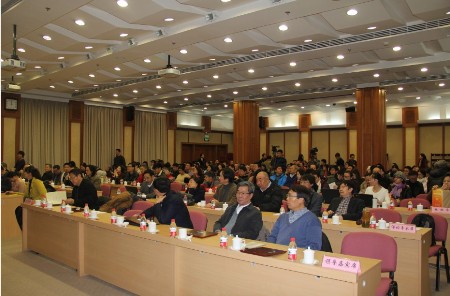
forum scene
Professor Shi Jinsong, head of the Archaeology Press, presided over the forum. Professor Wang Wei, head of the Institute of Archaeology CASS announced the six selected important archaeological discoveries: the Mazongshan jade quarry in Subei County, Gansu Province, the Dabona cemetery in Xiangyun County, Yunnan Province, the Gurujiamu and Quta cemeteries in Ngari Prefecture, Tibet, the Northern Dynasty mural tomb at Jiuyuangang, Xinzhou City, Shanxi Province, the Gangga cemetery in Chen Barag Banner, Inner Mongolia, and the cemetery of Bozhou Chieftain Yang’s family in Zunyi City, Guizhou Province.
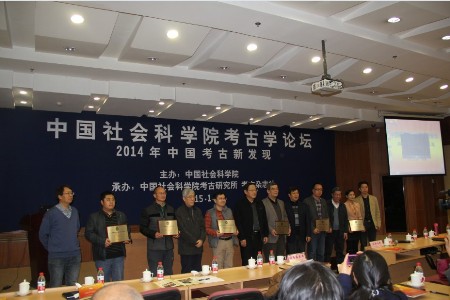
Archaeologists directing these excavations each award a certificate
Archaeologists directing these excavations each gave a 30 minutes presentation of their discoveries. Six guest archaeologists gave comments and organized discussions after each presentation.
The Mazongshan site was an important jade quarry of the Shanma culture to Han Dynasty. The Gansu Provincial Institute of Archaeology and Cultural Relics conducted several excavations from 2010 to 2014, during which were found 290 quarry pits, 33 houses, 31 look-out posts and 29 piles of raw stone material distributing in a 5400 m long and 1400 m to 1850 m wide area. Besides jade material, pottery, bronze, gold and iron objects and stone tools were also found. The site is important for the research on jade industry and trade during that time.
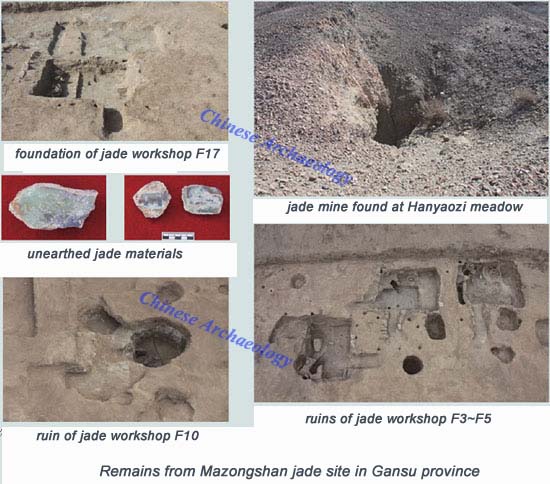
The Dabona cemetery of the Warring States Period to Western Han Dynasty had been found in 1960s. Yunnan Provincial Institute of Archaeology and Cultural Relics unearthed 25 burials in 2014. Six of them are large burials longer than 6 m and wider than 2.5 m. More than 280 pieces (sets) of artifacts made of bronze, iron, tin, ceramic, stone and wood were found, including weapons such as the sword, spear, axe, yue axe and arrow heads. The cemetery is very important for a better understanding of the bronze culture around the Erhai Lake area.

The Gurujiamu and Quta cemeteries in the upper valley of Xiangquan River had been excavated from 2012 to 2014 by the Institute of Archaeology, CASS and Tibet Institute of Cultural Heritage Preservation. In the Gurujiamu cemetery, 8 Xang Xung period burials and 3 Tibetan Period burials were found. The Xang Xung burials dating to 1800 to 1700 BP all have a stone chamber, and the larger ones are all more than 5 m in depth. Offerings in the burials include silk, gold mask, bronze, silver, iron objects and pottery. The 5 burials found in Quta cemetery dating to 1800 BP might belong to another tribe of the Xang Xung period. Horse and sheep bones and barley grains were found in these burials, together with painted wood table, bronze mirror, textiles, glass beads and other offerings.
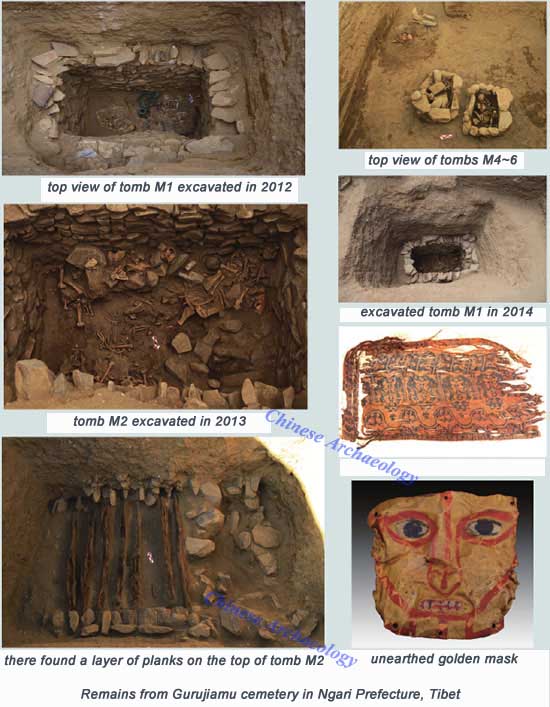
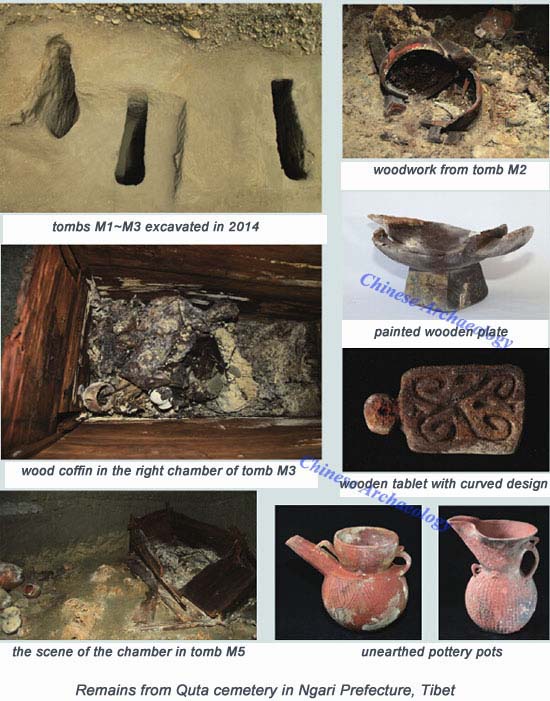
The Northern Dynasty mural tomb at Jiuyuangang excavated by the Shanxi Provincial Institute of Archaeology is covered by an earth mount 16 m to 26 m in diameter and 4 m in height. The murals in its passage and chamber is more than 240 sq m. Topics of the murals include fairy birds and animals, celestial figures, hunting scene, gourd of honor and constellations. The owner of the tomb might be an important member of the royal family of the Northern Qi Dynasty.
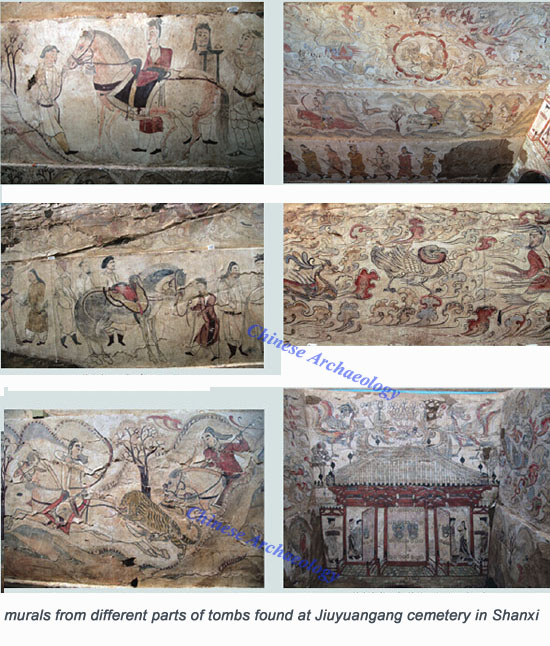

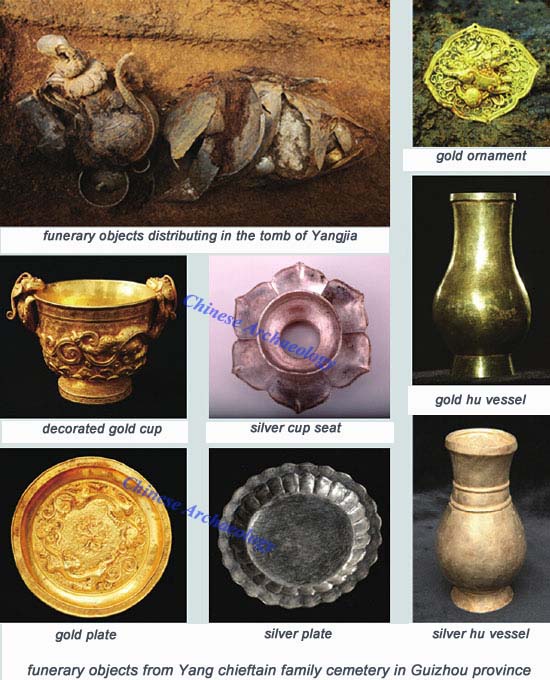
The forum which started 2002 has become one of the most important platform to exhibit the latest archaeological discoveries in China.

